Noiser
The Extraordinary Life and Death of Tutankhamun
Play Short History Of... Tutankhamun
In 1922, British archaeologist Howard Carter resurrected a Pharaoh whose name had been forgotten for 3,000 years—Tutankhamun. Viewed as a frail child by some and a fearsome warrior by others, many aspects of the boy Pharaoh's life are a mystery. So, what do we actually know about Tutankhamun?
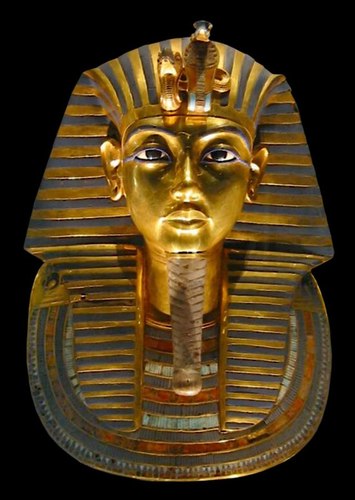
The Makings of a Young King
Tutankhaten was the son of the Pharaoh Akhenaten. Akhenaten made a series of unpopular decisions, forcing his subjects to turn their backs on the many gods they worshipped, instead focusing on one—the sun god Aten. Akhenaten ruled for 17 years before dying in 1333 BC. It was then that nine-year-old Tutankhaten ascended to the throne. He quickly made two radical decisions. The first was to reverse his father’s decree—the Egyptians were again free to return to their polytheistic religion. The second was to change his name to Tutankhamun.
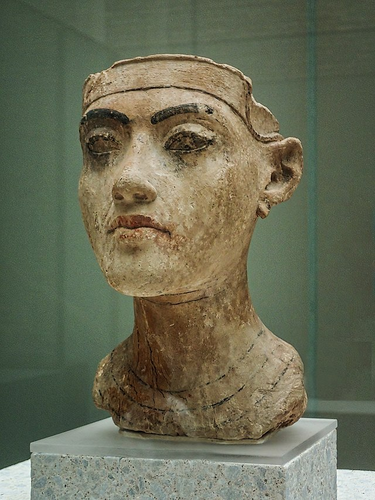
A Puppet King?
The reforms mentioned above were rather extreme steps to take for a boy not yet in his teens. Some historians theorise that he was simply a figurehead, with a team behind him who made all the important decisions. Evidence suggests that Tutankhamun’s rule was heavily influenced by his advisor, Ay. Chief priests were also suspected of guiding the king’s hand in whichever way they saw fit. Sadly, an absence of records means we will probably never know the power (or lack thereof) that Tutankhamun alone exerted.
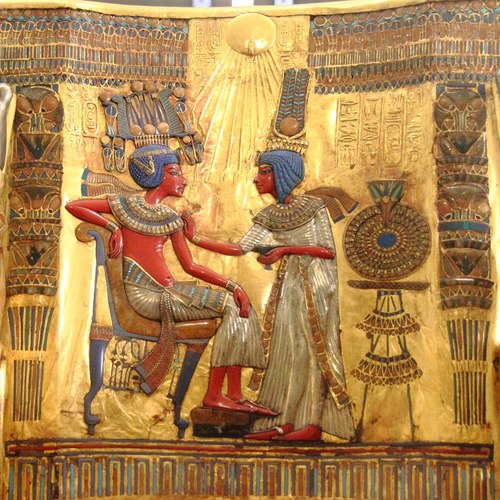
An Unexplained Death
In 1323 BC, Tutankhamun died after just nine years on the throne. At the time, there were whispers that the boy king had been assassinated. But, comprehensive examinations of his body in recent years have quelled these rumours. Some believe that an injured knee and crushed ribs suggest that he was killed in a chariot accident. The arsenal of weapons and depictions of him riding his chariot towards invading Nubians found in his burial chamber seem to back up this theory.

Others, however, believe that he was a frail, sickly child from the beginning, a theory supported by the discovery of over 100 walking sticks in his tomb. Researchers have proposed that his clubfoot shows signs of tissue death that could’ve led to a fatal infection. There are also arguments that malaria or sickle cell anaemia could have led to his demise.
Thanks to technological advancements, one day we may be able to determine the root cause of his death. However, like many aspects of Tutankhamun’s short life, it could remain a mystery forever.
Discovery
British archaeologist and Egyptologist Howard Carter began searching for Tutankhamun's tomb in 1914. By 1922, his benefactor, Lord Carnarvon, was quickly losing patience (and money). He threatened to pull funding, but in the final year of the dig, a twelve-year-old waterboy, Hussein Abdul-Rasoul, brushed his hand against a smooth stone. This turned out to be the top step of a staircase that led to Tutankhamun’s final resting place. Two weeks later, when Lord Carnarvon arrived in the Valley of the Kings, they took their first look inside the tomb through a hole Carter had chiselled into the entrance. It truly was an incredible sight…
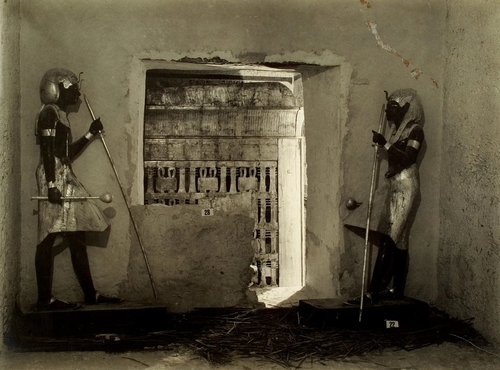
The light from Carter’s lantern cast long shadows and reflected against golden objects. There were beds and couches, statues, vases, caskets for food, intricately designed boxes, shrines, chairs, an alabaster cup, and much more besides. Excavation began immediately. It took Carter years to clear the site. Some 5,000 objects would be meticulously documented and removed from the tomb.
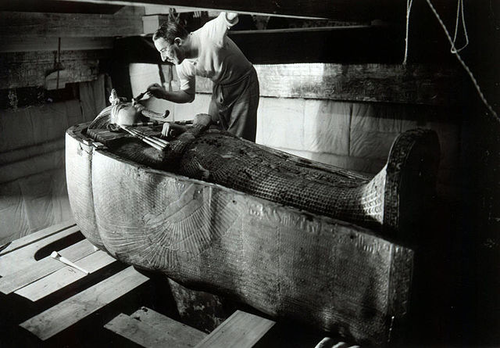
Because of this monumental find, King Tutankhamun went from a relatively unknown Pharaoh to a household name almost overnight. To this day, people around the world line up at museums to see the treasures from the young Pharaoh's tomb and learn his story. One could say that through these artefacts, Tutankhamun has achieved a form of immortality, continuing to captivate our imaginations thousands of years after his death.